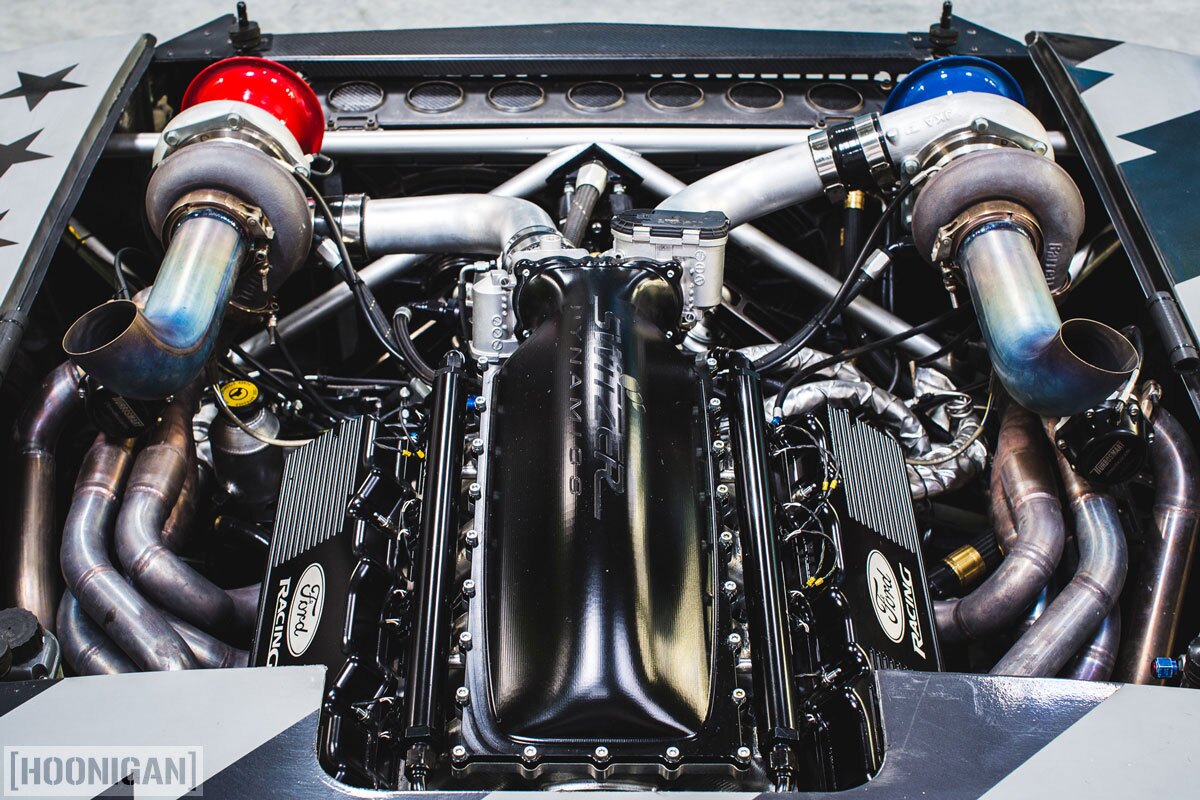Ken Block, the man perhaps best known for his series of crazy Gymkhana videos, has made use of some seriously over-the-top, high-horsepower cars over the years. Having moved from a heavily modified Subaru WRX to a tuned-up Ford Fiesta, he made the jump into the totally bespoke Hoonicorn Mustang. Now, the Hoonicorn has been given an upgrade, with a brand new twin-turbo engine making 1,400 hp (1,044 kW).
The original 845 hp (630 kW) Hoonicorn wasn't exactly lacking in power, but when it came time to pitch a new video idea, Ken Block decided he needed even more grunt under his right foot. What was the easiest way to create bulk horsepower? Strapping a pair of massive "open dump" turbochargers to the block of a V8.
"We got approval for a new video concept using the Hoonicorn, but I needed more power for what I needed it to do," Block says. "So, I developed the concept for the general idea of what I wanted — two turbos sticking out the hood — and handed that over to my team. They came back with a functional way to make that happen and added methanol to get the setup to produce the power that I wanted. We ended up with 1,400 horsepower! Ha, so they may have over delivered a bit — and I'm happy about that!"

To make sure it doesn't feel breathless at high altitude, the two turbos make 21 pounds of boost, and run on methanol instead of conventional fuel. Block says switching to methanol injection helped the team squeeze even more power from the engine without the need for over-the-top intercoolers, because it runs cooler than regular racing fuel.
Like before, the motor puts its power to all-four wheels, which will likely be spinning non-stop when the Hoonicorn V2 makes its small-screen debut.
Along with the new engine, V2 runs with a brand new livery. It looks fairly sedate in pictures, but running a light along the side reveals all the stars and stripes detailing is reflective. To our eyes, the gray-to-black fade looks fantastic, a little more subtle than the outgoing black-and-green.
The Hoonicorn V2 will make its debut in a video set to be launched next week.
To see the Hoonicorn V2 roasting marshmallows, check out the video below.
Sources: Hoonigan, Ford Performance










